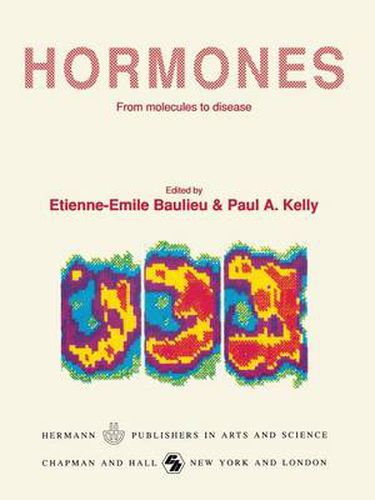Readings Newsletter
Become a Readings Member to make your shopping experience even easier.
Sign in or sign up for free!
You’re not far away from qualifying for FREE standard shipping within Australia
You’ve qualified for FREE standard shipping within Australia
The cart is loading…






This title is printed to order. This book may have been self-published. If so, we cannot guarantee the quality of the content. In the main most books will have gone through the editing process however some may not. We therefore suggest that you be aware of this before ordering this book. If in doubt check either the author or publisher’s details as we are unable to accept any returns unless they are faulty. Please contact us if you have any questions.
The field of endocrinology has exploded in the last 20 years because of advances in molecular and cell biology. This text integrates new knowledge about hormone structure and function with the more classical focus on endocrine physiology and metabolic disorders. The editors have assembled contributions by some of the world’s leading endocrine researchers and clinical scientists. The result is an illustrated text that integrates findings from studies of structure, biosynthesis, genetics, metabolism and pathophysiology. Molecular structures of hormones and receptor families growth factors, and related oncogenes are presented. Fertility control, in vitro fertilization, and aging are discussed, as is the role of hormones in related pathophysiologies such as cancer, diabetes, and growth disorders. This text begins with an illustrated introductory chapter by Professor Baulieu that surveys virtually all areas of the subject, from the molecular aspects of hormonal communication between cells to comparative evolutionary endocrinology. Subsequent chapters concentrate on specific hormone systems. Following each chapter, molecular biologists, biochemists and endocrinologists contribute essays on special topics of current research interest. It is written at the level of the beginning graduate student in endocrinology, but should also serve as a useful reference for other scientists interested in endocrine systems and hormonal regulation of cellular function. Many clinicians and trainees should find this book a useful source of information on the relationship of molecular and cellular endocrinology to endocrine pathophysiology and therapeutic intervention.
$9.00 standard shipping within Australia
FREE standard shipping within Australia for orders over $100.00
Express & International shipping calculated at checkout
This title is printed to order. This book may have been self-published. If so, we cannot guarantee the quality of the content. In the main most books will have gone through the editing process however some may not. We therefore suggest that you be aware of this before ordering this book. If in doubt check either the author or publisher’s details as we are unable to accept any returns unless they are faulty. Please contact us if you have any questions.
The field of endocrinology has exploded in the last 20 years because of advances in molecular and cell biology. This text integrates new knowledge about hormone structure and function with the more classical focus on endocrine physiology and metabolic disorders. The editors have assembled contributions by some of the world’s leading endocrine researchers and clinical scientists. The result is an illustrated text that integrates findings from studies of structure, biosynthesis, genetics, metabolism and pathophysiology. Molecular structures of hormones and receptor families growth factors, and related oncogenes are presented. Fertility control, in vitro fertilization, and aging are discussed, as is the role of hormones in related pathophysiologies such as cancer, diabetes, and growth disorders. This text begins with an illustrated introductory chapter by Professor Baulieu that surveys virtually all areas of the subject, from the molecular aspects of hormonal communication between cells to comparative evolutionary endocrinology. Subsequent chapters concentrate on specific hormone systems. Following each chapter, molecular biologists, biochemists and endocrinologists contribute essays on special topics of current research interest. It is written at the level of the beginning graduate student in endocrinology, but should also serve as a useful reference for other scientists interested in endocrine systems and hormonal regulation of cellular function. Many clinicians and trainees should find this book a useful source of information on the relationship of molecular and cellular endocrinology to endocrine pathophysiology and therapeutic intervention.